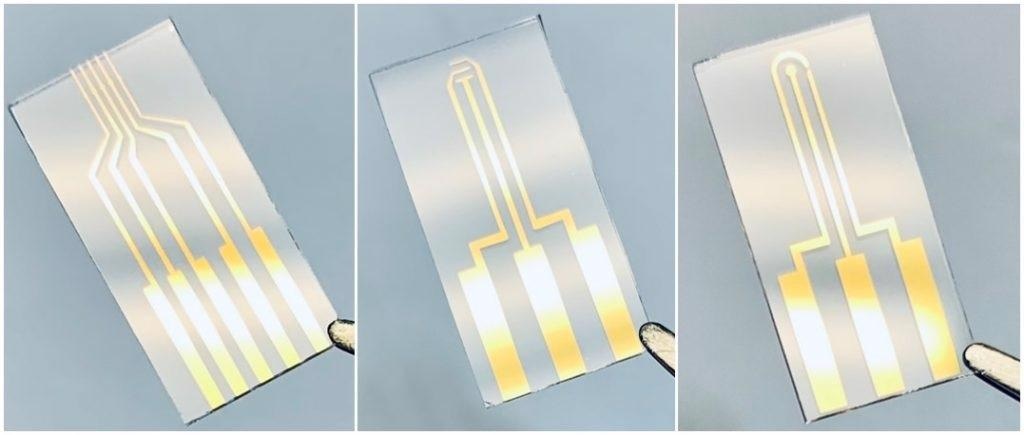Additive manufacturing (AM) is frequently used to create small-scale patterned electrodes for scientific micro-electromechanical systems (MEMS).
Platypus Technologies employs this approach to generate patterned gold thin films on glass, creating these via e-beam metal evaporation using a titanium adhesion layer. This process helps improve the film’s mechanical stability.
The gold films of patterned electrodes exhibit a considerable level of purity (99.999%) as well as low surface roughness that is generally down to the nanometer-scale.

Image Credit: Platypus Technologies, LLC
These particular patterned electrodes are manufactured without organic solvents or photoresist, both of which have the potential to contaminate the gold’s surface.
Patterned electrodes are ideal for micro-electrochemical systems, biosensors, chemical sensors, and microelectrodes. This article outlines the reasons why patterned electrodes from Platypus Technologies are uniquely suited for use in chemical sensing applications.
Key Attributes of Patterned Electrodes
Patterned electrodes offer exceptionally high reproducibility, meaning that they can be repeatedly created in a uniform manner, therefore ensuring that they provide identical outcomes in chemical sensor applications.
Patterned electrodes also offer low surface roughness, meaning that they produce good resolution while being highly sensitive.
Because patterned electrodes are produced using high purity gold, no cleaning is necessary prior to application. The transparent glass substrate also ensures that optical analysis is consistently high quality.
Types of Patterned Electrodes
One notable form of patterned electrode is a resistivity electrode, more specifically, a five-probe microelectrode. This type of patterned electrode is used to record sheet resistance; for example, a 4-point probe or kelvin method, impedance or conductivity measurements of biological tissues, polymers, 2D materials, and other advanced materials.
The three-probe microelectrode chip is another common type of microelectrode. This type is especially suited for creating and testing new chemical sensors. Other applications include biosensors and transistors.
A disk electrode chip is a patterned electrode well suited to electrochemical experiments involving the investigation of droplets and solutions using cyclic voltammetry and electrochemical impedance spectroscopy (EIS).
The center disk electrode is a working electrode, while the side electrodes may serve as reference or auxiliary electrodes, depending on the application in question.
What is a Chemical Sensor?
Chemical sensors are devices designed to detect and record chemicals in an analyte before converting this chemical data into usable electronic data.
Chemical sensors are employed in a range of applications; for example, nanotechnology, automotive, medical applications and home detection systems, including carbon monoxide detectors.
Chemical sensors work by oxidation, prompting a flow of electrons that travels from the working electrode to the counter electrode via an external circuit. Platypus Technologies offers a diverse, comprehensive range of patterned electrodes ideal for use in chemical sensors and other applications.

This information has been sourced, reviewed and adapted from materials provided by Platypus Technologies, LLC.
For more information on this source, please visit Platypus Technologies, LLC.